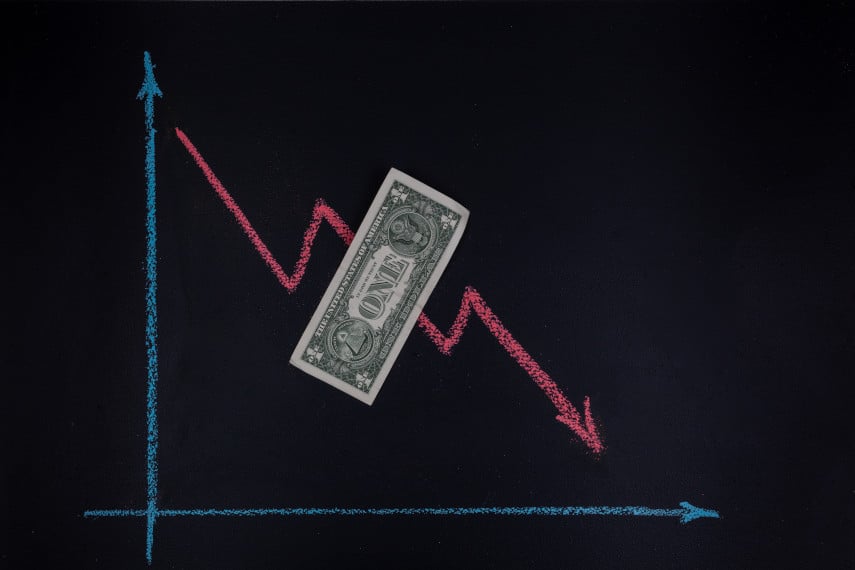6 Indicators of a Potential Recession
It seems that in the media today there are more and more mentions of the dreaded R-word: recession With growing economic uncertainty, the threat of potential recession seems to be growing as...
Economy

When the Federal Reserve looks to cut rates, it looks at two pieces of economic data more than any: inflation rates and employment numbers. That’s because the Fed’s dual mandate is to maintain stable prices and full employment.
The unemployment rate has been ticking up for months, and at 4.3% is signaling that the labor market is starting to weaken. But inflation has been trickier.
The Fed wants inflation to get back to its 2% target, but inflation has thus far been stubborn, and so the Fed has held off. But recent inflation data may indicate that inflation is coming down enough for the Fed to start cutting rates.
The latest Consumer Price Index data indicate that inflation has fallen to a 2.9% year on year rate, the first time it has fallen below 3% in over three years. While that’s still higher than the Fed would like, it’s still a positive trend towards 2%.
Core inflation, that is, inflation minus food and energy prices, is at 3.2% year on year. That’s still higher than the Fed would like, but it too is coming down.
There’s one more consumer inflation report in September before the Fed’s next monetary policy meeting, and if it shows inflation falling even further, then the last obstacle for a September rate cut would seem to have been removed.
Markets are already betting that the Fed will start cutting rates at its September meeting, and the only real question is whether the Fed will cut by a quarter point or a half point. Of course, if economic conditions really deteriorate before then, the cut could be even bigger.
While inflation may still be a ways away from 2%, the fact that it’s trending in the right direction is probably causing the Fed to breathe a sigh of relief. And that’s because what’s going on in the labor market is far more concerning.
Numerous major companies have announced layoffs, such as Intel, which is cutting over 15,000 jobs. Meanwhile consumers have pulled back on spending, with companies like McDonald’s announcing slumping sales, and companies like Home Depot expecting the second half of the year to see consumers pull back on spending even more.
The economic slowdown that many had been warning of for months is finally becoming apparent, even if that hasn’t yet been reflected in stock prices, which are still flying high.
In fact, markets seem to universally shrug off bad economic data, as each piece of bad data just makes it more likely that the Fed will cut rates. And as rate cuts would bring more money injected into the financial system, many think that’s a good thing.
They seem to forget that the trillions of dollars the Fed injected into the financial system in 2008 and beyond failed to boost markets quickly, and only belatedly did that money work its way into stock markets and create a boom.
Anyone hoping for the Fed to juice stock markets with its monetary policy is likely going to be disappointed once monetary easing starts once again. And that monetary easing, depending on how large it is, could send inflation higher.
Many people seem to forget that the reason the Fed will likely cut rates is because the economy is slowing. That’s what happened in 2001 and 2007.
History may not repeat itself, but it definitely rhymes quite often, and this time will likely be no different. This next series of rate cuts could indicate that the US economy is falling into recession, and should be seen not as something beneficial for financial markets but rather a warning that worse is on the way.
To anyone who has been looking seriously at the state of the economy, it has been clear for months that the US economy is facing serious headwinds. And many Americans have already started taking steps to protect themselves with gold.
Gold has served as a safe haven asset for centuries, and is one of the first assets people turn to to protect themselves during times of financial turmoil and economic uncertainty. Indeed, safe haven buying this year has helped push the gold price to multiple all-time highs, and gold could continue to climb once the economy falls into recession.
One popular method of buying gold is buying gold through a gold IRA. A gold IRA offers the same tax advantages as any other IRA account, the only difference is that it holds physical gold coins or gold bars, rather than the stocks, bonds, or shares in funds that other IRAs do.
Gold IRAs are commonly funded with rollovers from existing 401(k), 403(b), TSP, IRA, or similar retirement accounts. This allows you to protect your existing retirement savings with physical gold.
Many people watched in horror as the 2008 financial crisis played out, and trillions of dollars of hard-won savings and assets evaporated before their eyes. They also watched as the price of gold rose to all-time highs in the aftermath of the crisis.
Many of those people learned their lesson from 2008, and they’re buying gold today. Are you one of them?
If not, maybe it’s time for you to start thinking about protecting your assets with gold. Rollovers from retirement accounts into a gold IRA are normally made tax-free, ensuring that you won’t take a tax hit if you decide to protect your savings with gold.
Goldco has helped thousands of people just like you benefit from owning gold. If you want to find out more about how a gold IRA can help you protect your financial future, call Goldco today.

